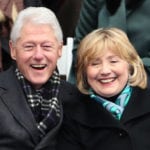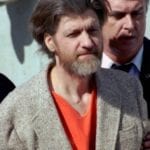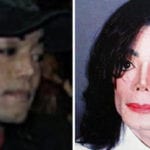 Food
Food  Food
Food  History
History 10 Odd Things Colonial Americans Kept at Home
 Weird Stuff
Weird Stuff 10 Superstitious Beliefs That Once Consumed Entire Cultures
 History
History 10 Bizarre Friendly Fire Incidents in Military History
 Technology
Technology 10 Modern Technologies That Accidentally Imitate Ancient Magic
 Mysteries
Mysteries 10 Mysteries of the Human Genome
 Weird Stuff
Weird Stuff 10 Things So Rare They’ve Only Been Found Once
 History
History 10 Legends Whose Last Moments Undid Their Glory
 Health
Health 10 Futuristic Ideas to Treat Common Medical Problems
 Weird Stuff
Weird Stuff Ten Surreal Attempts to Reverse Baldness
 Food
Food 10 Everyday Foods You Didn’t Know Were Invented by the U.S. Military
 History
History 10 Odd Things Colonial Americans Kept at Home
 Weird Stuff
Weird Stuff 10 Superstitious Beliefs That Once Consumed Entire Cultures
Who's Behind Listverse?

Jamie Frater
Head Editor
Jamie founded Listverse due to an insatiable desire to share fascinating, obscure, and bizarre facts. He has been a guest speaker on numerous national radio and television stations and is a five time published author.
More About Us History
History 10 Bizarre Friendly Fire Incidents in Military History
 Technology
Technology 10 Modern Technologies That Accidentally Imitate Ancient Magic
 Mysteries
Mysteries 10 Mysteries of the Human Genome
 Weird Stuff
Weird Stuff 10 Things So Rare They’ve Only Been Found Once
 History
History 10 Legends Whose Last Moments Undid Their Glory
 Health
Health 10 Futuristic Ideas to Treat Common Medical Problems
 Weird Stuff
Weird Stuff Ten Surreal Attempts to Reverse Baldness
10 Conspiracy Theories From The Philippines
Filipinos are typically warm, friendly, and diligent people. But behind their accommodating natures lie several dark secrets—webs of conspiracies that range from the plausible to the downright bizarre.
10Paul Walker Was Murdered After Learning Too Much About Underground Corruption

Hollywood actor Paul Walker died on November 30, 2013 after a fatal car crash. Reports indicated that Walker’s friend, Roger Rodas, had been driving the car at 160 kilometers per hour (100 mph) before it slammed into a concrete light pole and several trees. The car was engulfed in flames within moments, though Walker was believed to have died immediately upon impact.
Conspiracy theorists were quick to point out that Walker’s death was not an accident but rather cold-blooded murder. Walker was previously in the Philippines working alongside charities to give food and medical aid to victims of Typhoon Haiyan. Allegedly, Walker ended up digging too deep and uncovering evidence of dirty money—relief funds being pilfered by corrupt officials.
Another story suggests that it was not money he discovered, but rather permanent birth control pills being hidden in medicinal supplies. These were thought to be used to help curb the country’s rapidly rising population.
9The Sabah Invasion Was Planned By Malaysian Opposition Parties
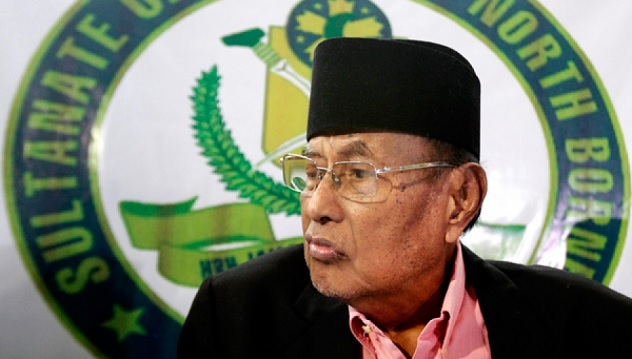
Today a tiny province in the southern Philippines, hundreds of years ago Sulu was actually a powerful sultanate. Among other domains, Sulu lorded over the territory of Sabah in Borneo. In 1878, the Sultan of Sulu allowed the British North Borneo Company to lease the land. From the 1950s to the early ’60s, Malaysian territories gradually attained independence from the British. Sabah became part of the new Federation of Malaysia in 1963.
Turmoil erupted in the region once more on February 11, 2013, when hundreds of men loyal to the Sultan of Sulu infiltrated Sabah and occupied several villages. Sultan Jamalul Kiram III insisted that Sabah was rightfully part of his kingdom, and he urged his supporters to valiantly defend against Malaysian police and military personnel.
Politicians and theorists from the Philippines and Malaysia posited various theories, the most enduring being that Kiram had talks with Muslim rebel leader Nur Misuari and former Malaysian Deputy Prime Minister Anwar Ibrahim. Ibrahim’s career was nearly ruined by a scandal, thus he hoped to retake the reins of power by leading the Opposition Party. Sources suggest that Ibrahim promised Kiram several things, such as Sabah attaining autonomy. The chaos would have allowed the opposition to win the next general election.
Ultimately, the “invasion” failed—on March 24, 2013, all of Kiram’s men were either killed or captured. The Sultan himself would pass away later that year, though his successors and family still continued to press the “Sabah Issue.”
8The Reproductive Health Bill Was Set Up By Other Countries To Limit Filipino Births
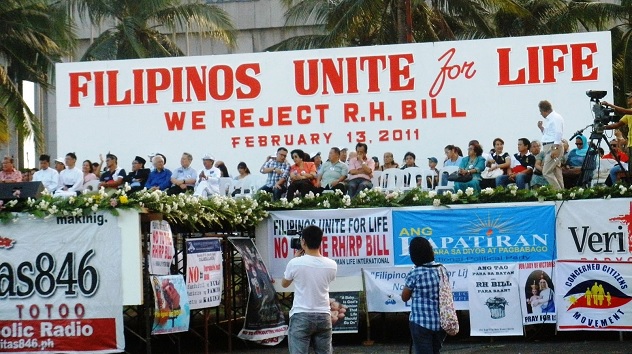
The Reproductive Health Bill (RH Bill), was signed into law on December 21, 2012. The entire process was mired in controversy since the Philippines is predominantly Catholic—the only Catholic nation in Southeast Asia, in fact. Thousands of protesters gathered in front of churches and government offices demanding that the statesmen reject the RH Bill. Christian devotees and pro-life activists considered it immoral and against the tenets of Christianity.
The most fervent of advocates argued that contraception was akin to abortion. One anti–RH Bill congresswoman, in a moment of religious fervor, stated that “Heaven must be crying” after the debate ended on the House floor. People took up arms online, believing that God was punishing the Filipinos for their insolence.
Senator Vicente Sotto III staunchly opposed the RH Bill, citing that it was a worldwide conspiracy. Sotto claimed that the movement was being funded and spearheaded by the United States Agency for International Development (USAID), which aimed to regulate the population via birth control. Sotto also pointed an accusing finger toward various United Nations agencies and the International Planned Parenthood Federation (IPPF) for allegedly paying off legislators to vote “yes” on the proposal. Sotto believed these groups “underhandedly sought to legalize abortion in countries where it is still a crime.”
7Emilio Aguinaldo Killed Off His Rivals
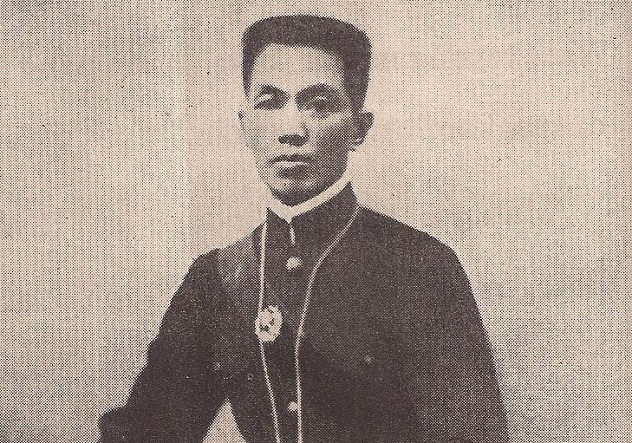
Emilio Aguinaldo is adulated in his home province for his fight against foreign powers and for becoming the first president of the fledgling republic. Some historians, however, paint him in a more villainous light. In the 1890s, the Philippine revolution against Spanish rule was in full swing. Andres Bonifacio, leader of the Katipunan—a large rebel force fighting the Spanish overlords—was believed to have been at odds with Aguinaldo, a rising star in the group.
By 1897, tensions escalated within the Katipunan, as both Bonifacio’s and Aguinaldo’s factions vied for control. Historians state that Bonifacio cordially received Aguinaldo’s men in his camp, not knowing that there was a warrant for his arrest. Aguinaldo’s men suddenly attacked, stabbed Bonifacio in the neck and allegedly raped his wife.
Andres Bonifacio and one of his brothers were put on trial, but the judges and jury were loyal to Aguinaldo. Even their defense lawyer argued that his clients were guilty of treason and of conspiring to have their forces surrender to the Spaniards. They were executed on May 10, 1897.
Spain eventually relinquished its hold on the Philippines, though it was quickly supplanted by a new world power—the United States. Sources suggest that Aguinaldo knew that the Americans would be more welcoming to him, but first he had to dispose of another rival—General Antonio Luna, who was fiercely opposed to the Americans.
On June 5, 1889, Aguinaldo sent a telegram to Luna, asking to meet in a convent. When Luna and his aide arrived, they found not Aguinaldo but rather a group of assassins who shot and stabbed both men to death. According to theorists, Aguinaldo’s mother peeked from the window of the convent and asked, “Is he still moving?”
Even though Aguinaldo wasn’t directly linked to the killings, it wouldn’t have been out of character for him. Those who ran for the presidency years later used this to their advantage, casting doubt on Aguinaldo’s legacy by pointing out the unsolved intrigue behind the murders of both Luna and the Bonifacios.
6The Filipino Elite Planned To Enslave Its Own People

During the early 20th century, a question arose as to whether or not the Philippines should be granted independence. Various studies were conducted by American officials pertaining to the independence movement—how serious was this sentiment among the populace, who were the personalities who supported it, and so on.
However, there were a significant number of American scholars, military men, and clergy who opposed the idea and attempted to sabotage it in the sneakiest possible way. They created and popularized the idea that there was a conspiracy—led by Filipino elitists—that would come to unfortunate fruition should independence be achieved. According to them, this small group of highly educated and well-to-do men and women were “agitators and villains” who sought to conquer the everyday Filipinos and enslave them for their own gain the second the United States sailed away.
A considerable (and rather insulting) part of the theory suggested that many Filipinos were completely ignorant and had “no conception of the honor and responsibility thrust upon them.” Certain statistics, such as how only 5 percent of the population was literate and that only 3 percent knew how to handle self-governance, were bandied about liberally. It was added that most Filipinos actually feared the idea of being granted independence as it would only lead to instability.
5The Nazis Led The Attack On Pearl Harbor And The Philippines
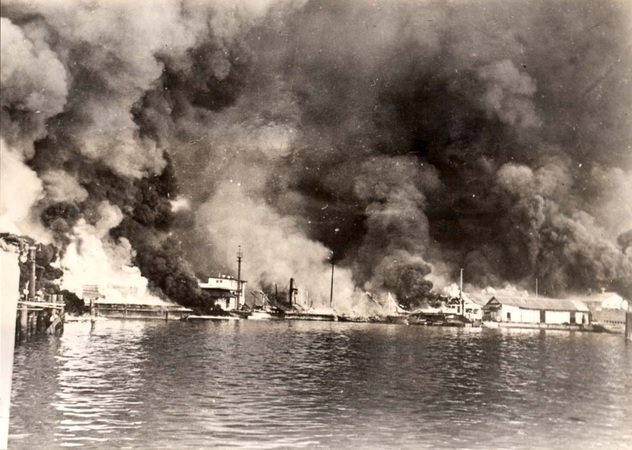
On December 10, 1941, a Gallup Poll asked the United States public why they thought Japan attacked Pearl Harbor. At the time, 48 percent of Americans believed the Germans put them up to it. By February 1942, that number had risen to 68.5 percent.
What does this have to do with the Philippines though? Well, although the attack on Pearl Harbor lasted barely a few hours, the struggles in the Philippines (which was attacked by Japan on the same day) continued until 1945.
Many different publications and people subscribed to the theory that the Germans were actively participating in the Pacific Theater, particularly in the Philippines. In the days after the Japanese attacks, the invaders were even called “Japanazis.” Some newspapers bore reports of American forces in the Philippines dogfighting with “white pilots.” Military spokesmen in Manila even stated that Japanese strafing and bombing runs mirrored those employed by the Germans.
In addition, Time magazine and other publications ran articles stating that witnesses saw Messerschmitts in Pampanga and Stukas in Hawaii. Filipinos were also said to have found dud bombs buried in the ground there that bore markings such as “Frankfurt 1916.”
4Funneling Yamashita’s Treasure Into American Banks
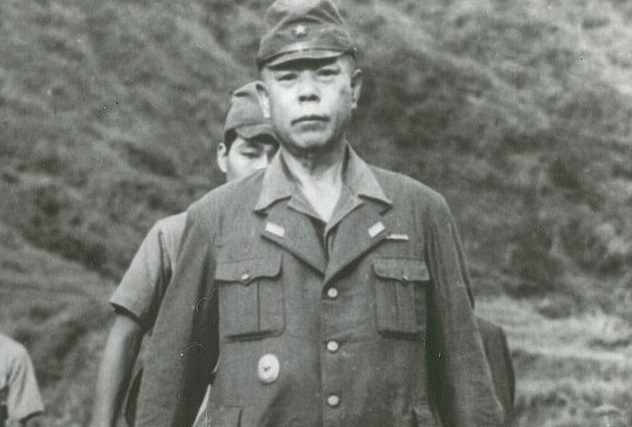
Tomoyuki Yamashita’s treasure consisted of riches plundered by the Japanese armies from territories that they occupied during World War II. In the past, we’ve mentioned how notorious Philippine dictator Ferdinand Marcos swindled the man who found the treasure deep in the mountainous regions of his country. One of his confidantes, Robert Curtis—a mining expert and metallurgist from Nevada—aided him in selling the gold back to the Japanese, or possibly to the CIA.
After Marcos was ousted from power in 1986, Curtis was contacted by the John Birch Society—an organization with ties to both the American economy and its politics. They believed that only a fraction of the treasure was recovered and that more lay hidden in the Philippine underground. Curtis was tasked to hunt for the elusive treasure and to smuggle it into the United States.
Once the treasure was found, the plan was to sell it to a company in the Bahamas. The money would then be transferred to the Imperial Bank of Canada and finally funneled to banks in the United States. Curtis also created a shell corporation in the Philippines to facilitate these transactions. Once word got out, Curtis fled the Philippines, though he would later claim that one such expedition netted him an estimated $4.6 billion in gold bullion.
3The Magsaysay-Lansdale Connection
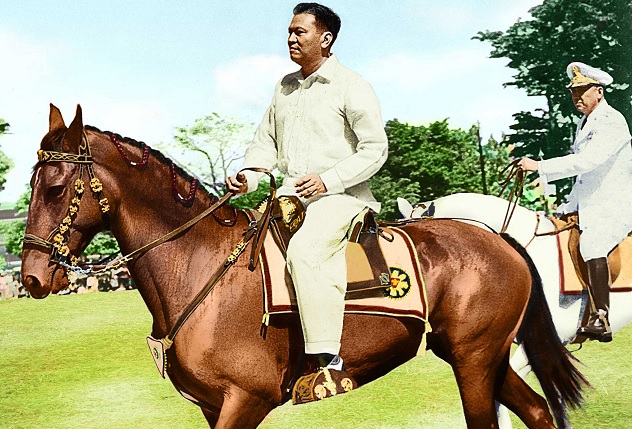
On March 17, 1957, a Douglas C-47 plane crashed on the side of Mount Manunggal in Cebu. One of the fatalities was former Filipino president Ramon Magsaysay. Officially, the crash was ruled an accident due to mechanical failure, but that didn’t stop the conspiracy theorists from blaming both the Hukbalahap (HUK—a guerrilla force which once fought Japan and were now rebelling against the Filipino government) and the CIA (which had embedded agents in the country).
The Hukbalahap theory had weight thanks to Magsaysay’s service record as well as previous attempts on his life. During World War II, he had been an intelligence officer with the United States Army Forces in the Far East (USAFFE). He was also engaged in guerrilla activities and met various HUK leaders. After the war, the HUK became disgruntled leading to strife within the provinces. Magsaysay, who became Secretary of National Defense, was engaged in a brutal and efficient campaign that all but ended the HUK threat.
Others point out Magsaysay’s CIA connections—particularly Colonel Edward Lansdale, one of the most efficient agents in the organization’s employ. The CIA had only been established a few years prior, and it needed to gain a strong foothold in Southeast Asia to monitor the Communist threat. Magsaysay was thus chosen as a puppet leader, and Lansdale worked overtime to help him rise to power—he was his speechwriter (even once punching the president to prevent him from reading an unapproved speech) and Magsaysay’s presidential campaign evoked major amounts of American-style propaganda. As supporters of this theory have suggested, Magsaysay’s death came because he was slowly becoming unruly and had to be disposed of.
2Ninoy Aquino Was A CIA Agent
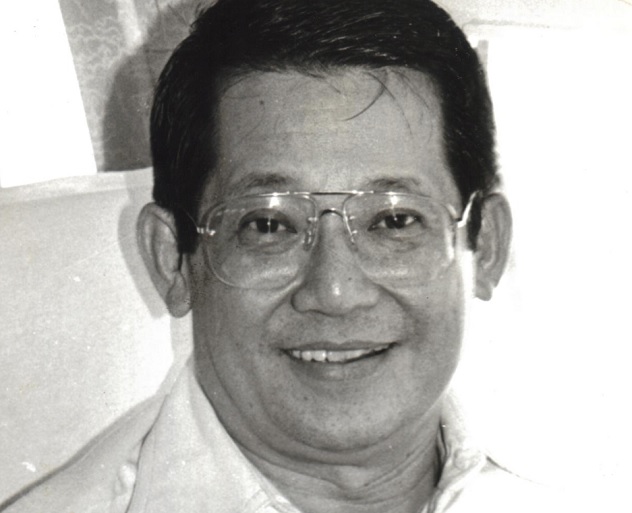
According to certain conspiracy theories, the CIA’s meddling in Filipino affairs also included Benigno “Ninoy” Aquino Jr. Aquino is acknowledged as one of the most heroic figures in Philippine history thanks to his fight against the Marcos dictatorship.
There are those who suggest that Aquino, before and during his time as an outspoken critic of the administration, had been an agent of the CIA and was instrumental in aiding Magsaysay’s conquest of the HUK. When the president reneged on his promise of amnesty for the HUK’s leader, Aquino’s outrage led to Magsaysay sending him to the United States to “observe” CIA training programs.
Ninoy was regarded as a blabbermouth who often spoke of his covert missions with great excitement. He even indulged an alleged mission to overthrow President Sukarno of Indonesia to his peers. This, predictably, angered the CIA and led them to distrust him. And speaking of what might happen should the CIA deem you untrustworthy . . .
1Who Killed Ninoy Aquino?
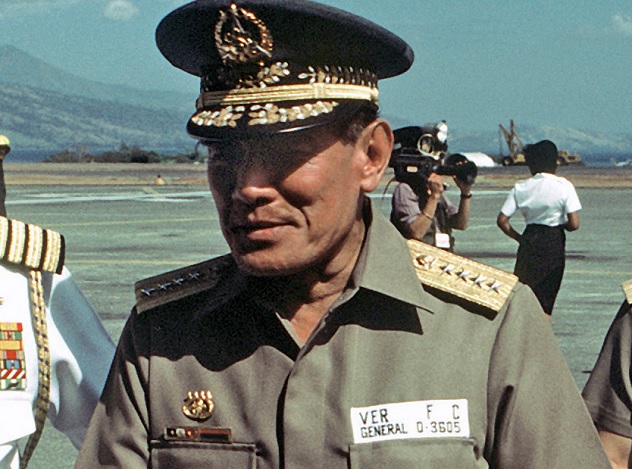
Ninoy Aquino’s assassination on August 21, 1983, is considered the “Mother of All Philippine Conspiracy Theories.” For one thing, it remains unsolved to this day, and for another, it brought about a huge upheaval in Philippine society with aftershocks that could be felt decades later.
Aside from an angry CIA, the most obvious answer to the question “Who killed Ninoy?” would have to be Ferdinand Marcos himself. He ruled the country for decades, and Ninoy was his greatest rival. At the same time, though, Marcos had nothing to gain and everything to lose (as evidenced by what happened historically) from assassinating Ninoy, making him an unlikely candidate overall.
Others suggest that it was General Fabian Ver, head of the Armed Forces and one of Marcos’s cronies. Ver, who fled the Philippines to seek political asylum in Germany, was once asked by his son if he gave the order to kill Ninoy. The old general answered, “How could you even say that? He was my brother at the University of the Philippines. And we were friends.”
The actual triggerman, Rolando Galman, was shot and killed by soldiers on the same day that he shot Ninoy. Both Aquino’s and Galman’s bodies were taken to a military camp, and rumors suggest that hours passed before a coroner could examine them. Several hours after that, Marcos announced that Galman, a “Communist hitman,” acted on his own.
Successive inquiries, however, have led to the conviction of 16 soldiers who conspired to kill Ninoy. In 2006, one of the men, Master Sergeant Pablo Martinez, claimed in a Time interview that, according to Galman, it was Eduardo “Danding” Cojuangco—a business tycoon and the cousin of Ninoy’s wife—who ordered the hit.
Then again, there are those who view Marcos’s wife, Imelda, as the brains behind the operation. After all, many of Ninoy’s most brutal verbal putdowns were directed toward the former First Lady. It might have also been due to bitterness and jealousy, since Ninoy and Imelda were said to have dated prior to meeting their eventual partners.
Jo loves conspiracy theories, but in a pinch he has no problem blaming everything on aliens.
